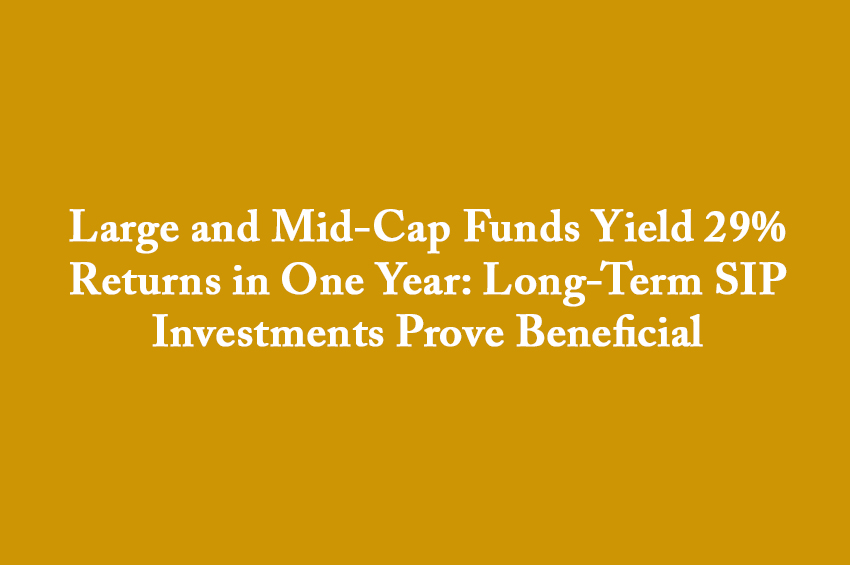Winning Bizness Desk
Mumbai. If you are considering investing in mutual funds this Diwali, large and mid-cap funds may be a promising option. According to the Association of Mutual Funds in India (AMFI), these funds have generated impressive returns of 29.22% over the past year, as of October 18, 2024. Investors can capitalize on these returns through long-term systematic investment plans (SIPs). Let’s explore what large and mid-cap mutual funds are and how they can be beneficial for investors. As Diwali approaches, investing in large and mid-cap mutual funds through SIPs can be a lucrative opportunity. With a strong historical performance and the potential for significant long-term returns, investors are encouraged to consider this investment strategy as part of their financial planning.
What Are Large and Mid-Cap Mutual Funds?
Large and mid-cap mutual funds are equity funds that invest in the top 200 companies in India, encompassing both large-cap and mid-cap companies. Investing in this category typically offers higher returns compared to pure large-cap funds, making them an attractive option for investors looking for growth.
Advantages of Long-Term SIP Investments
Investing in equity funds over the long term tends to yield greater benefits. This is largely because SIPs help mitigate the risks associated with market volatility. By averaging out the highs and lows of the stock market, investors can enjoy a more stable return, complemented by the benefits of compounding over time.
Is SIP the Best Investment Method??
While it may not be fair to label SIPs as the ultimate investment strategy, they are certainly a strong option for individuals with a steady income, such as salaried employees and business owners. SIPs allow for manageable contributions, meaning that small, regular investments can accumulate into a significant amount over time without putting undue strain on finances.
Understanding Benchmarks
Benchmarks, typically represented by market indices such as the BSE Sensex and Nifty, are used to compare the performance of mutual funds. For instance, if a particular mutual fund delivers a return of 59% over a specific period, but its benchmark yields 70%, it indicates that the fund has underperformed relative to its benchmark. A mutual fund that consistently surpasses its benchmark is considered to have better performance.
What is Market Capitalization?
Market capitalization, or market cap, categorizes companies based on their total market value. Companies are classified into three categories:
Large-cap: Companies with a market cap of Rs 20,000 crore or more.
Mid-cap: Companies valued between Rs 5,000 crore and Rs 20,000 crore.
Small-cap: Companies with a valuation of less than Rs 5,000 crore.
Typically, the top 100 companies in terms of market cap are classified as large-cap, those ranked 100 to 250 as mid-cap, and all others as small-cap.


